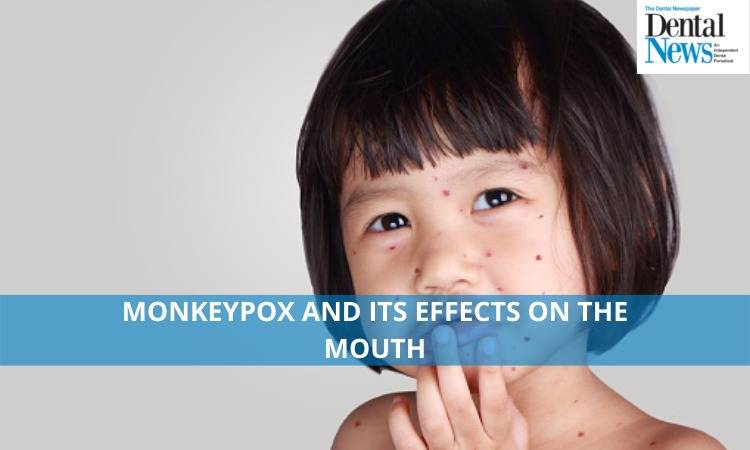
Monkeypox has generated a wave of fear and unpredictability. After the 2019 pandemic, Monkeypox is seen as a significant threat to the world. While the experts have deemed the fear unnecessary since the predictability of the virus is quite known. Certain authorities still have warned about the outbreak.
Since COVID-19 affected the dental sector more than any other profession, dentists worldwide are still reviving from the after-effects of the pandemic. Meanwhile, Monkeypox has caused another threat to the dentists since the spread of contagious infection can also occur through respiratory droplets.
Monkeypox and Oral Health
Once the initial infection has made its way through the body, there is a latent incubation phase for the infection.
This lasts for about 7 to 14 days, after which the patient might experience symptoms like fever, malaise, headaches and weakness.
While most Monkeypox cases mimic the generic symptoms, some cases might reflect the infection in the oral cavity.
Swollen Lymph nodes
One of the most significant symptoms of Monkeypox is lymphadenopathy - characterised by the enlargement or swelling up of lymph nodes due to infection.
In most cases of the Monkeypox virus, lymphadenopathy can be seen in the submandibular, cervical, axillary (armpit), and groin areas.
Oral Lesions
According to CDC, oral lesions can be noticed in about 75 per cent of the cases of Monkeypox in some parts of Africa.
These lesions are well-circumscribed, circular and deep-rooted. Some of these lesions develop umbilication - which can be seen as a sort of dot right on top of the lesion.
Rash
Most Rashes develop on the body after the end of the latent phase during the Monkeypox infection.
The first signs of these rashes appear on the face and then consequently make their way downwards to the chest, arms and groin areas.
Surprisingly, dentists may be more likely to detect early signs of monkeypox infection than any other healthcare physician.
How Can Dentists Diagnose Monkeypox?
A patient stepping into the dental office might be in the prodromal phase. However, the first lesion to develop is an intraoral lesion.
A dentist can safeguard the health and well-being of oneself and those in the dental office by checking the tongue for any signs of redness or ulcers.
This will be followed by an examination of the lymph nodes. Submandibular and cervical lymph nodes can be a giveaway in patients infected with the Monkeypox virus if they are enlarged.
Lymphadenopathy is another way to differentiate the Monkeypox virus from chickenpox and smallpox since lymphadenopathy only appears in the former.
In cases when the facial lesions are distinguished on the visit, the dentist must refer the patient to a general physician for consultation.
Other Symptoms of Monkeypox Virus
Besides lymphadenopathy and skin lesions, other symptoms include fever, malaise, exhaustion, and muscle ache.
While the multi-country outbreak of Monkeypox might have come as a surprise, the condition can be managed with optimum care and hygiene practices.
Dentists are encouraged to look out for these signs during their clinical practice in order to catch the infection in its early stages and refer the patient to a general physician for further evaluation of the case.

Dr Rida Qamar
The author is contributing writer at Dental News Pakistan and can be reached at Ridaqamar100@gmail.com

